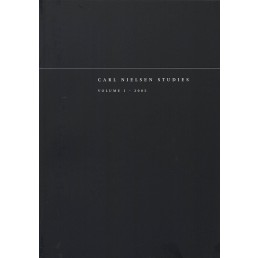Carl Nielsen's Cultural Self-Education. His Early Engagement with Fine Art and Ideas and the Path towards 'Hymnis Amoris'
DOI:
https://doi.org/10.7146/cns.v5i0.27774Abstract
In this paper Colin Roth examines the documentary record for insights into the composer’s developing enthusiasm for fine art in his early years, and considers their implications for our understanding of his music-compositional process and creative path. He looks back to the emergence of a strong and persistent interaction with French cultural values and aesthetics in ‘the Golden Age’ and traces the path of its Platonic neo-classicism as a distinctively Danish contribution to ‘romanticism’s double helix’, from Eckersberg and Thorvaldsen through Kierkegaard and then to Georg Brandes and Carl Nielsen, revealing a source in Kierkegaard’s Either/Or of Nielsen’s best known remarks about his own music. It is Nielsen’s perception that ‘all art is in its essence the opposite of sensuality and as soon as this [sensuality] comes in, is it no longer high and clean art’, written about Rubens in 1894, which helps to illuminate the choice of a Latin text in Hymnus Amoris . In asking what we can we learn about Nielsen’s way of learning from studying his self-education in art, and about what he learned as a young man and from whom, our knowledge of the development of Nielsen’s musical aesthetics and outlook is enriched.Downloads
Published
2012-10-01
How to Cite
Roth, C. (2012). Carl Nielsen’s Cultural Self-Education. His Early Engagement with Fine Art and Ideas and the Path towards ’Hymnis Amoris’. Carl Nielsen Studies, 5. https://doi.org/10.7146/cns.v5i0.27774
Issue
Section
Articles
License
- Authors retain copyright and grant the journal right of first publication with the work simultaneously licensed under a Creative Commons Attribution License that allows others to share the work with an acknowledgement of the work's authorship and initial publication in this journal.
- Authors are able to enter into separate, additional contractual arrangements for the non-exclusive distribution of the journal's published version of the work (e.g., post it to an institutional repository or publish it in a book), with an acknowledgement of its initial publication in this journal.

